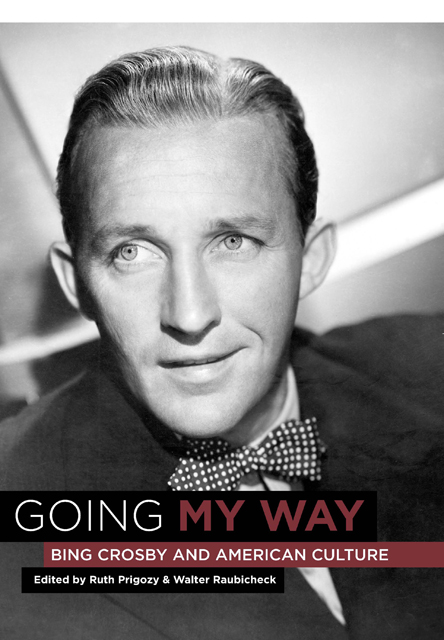Book contents
- Frontmatter
- Dedication
- Contents
- List of Illustrations
- Foreword
- Preface
- Acknowledgments
- Introduction Bing Crosby—Nothing Is What It Seems
- Part 1 Theoretical Perspectives on Crosby
- Part 2 Cultural Perspectives on Crosby
- Part 3 Historical Perspectives on Crosby
- Personal Comments
- Selected Bibliography
- List of Contributors
- Index
10 - Rivalries: The Mutual Mentoring of Bing Crosby and Frank Sinatra
Published online by Cambridge University Press: 11 March 2023
- Frontmatter
- Dedication
- Contents
- List of Illustrations
- Foreword
- Preface
- Acknowledgments
- Introduction Bing Crosby—Nothing Is What It Seems
- Part 1 Theoretical Perspectives on Crosby
- Part 2 Cultural Perspectives on Crosby
- Part 3 Historical Perspectives on Crosby
- Personal Comments
- Selected Bibliography
- List of Contributors
- Index
Summary
The joint radio appearances of Crosby and Sinatra between 1944 and 1954 reveal an extraordinary personal and musical rivalry, with the competition between the two singers providing the premise as well as the substance of their airtime together. In their scripted roles as father figure and upstart son, Crosby and Sinatra move from ad hominem insults to vocal “cutting contests” to sparkling duets in which they harmonize and take turns singing lead. Initially, their relationship, to borrow from literary critic Harold Bloom's work on poetic influence, might be described as manifestly Oedipal—a tension between the masterful predecessor and his resistant or strong successor. Yet the interaction between the two is so complete and reciprocal that it is easy to downplay the importance of their musical differences. Because the ground rules, along with the songs themselves, were shared, their rivalry might more accurately be described as a continuing, highly visible, public conversation, the sort of dialogue necessary to construct, then confirm a tradition. In short, Crosby and Sinatra are the primary shapers of the only body of musical literature sufficiently coherent to be considered an American canon of popular song.
Certainly any attempt to account for the enduring collection commonly designated “The American Songbook” requires an understanding of the different musical values of its two most prominent performers. Gary Giddins, Will Friedwald, and numerous other critics have established Crosby's importance as the first major white singer to assimilate the music of Louis Armstrong and, for that matter, the language of jazz. Yet, in approaching the Crosby-Sinatra encounters, the present- day listener will find it hard to ignore Crosby's other primary function: the maker and caretaker of melody. Friedwald calls Crosby “the first singer to trulyglorify and exalt the American popular melody” and emphasizes the musical diversity separating him from Sinatra. And it is the vast range, as well as the quality, of Crosby's song choices that leads Giddins to observe, “the romantic vulnerability of a Sinatra is unsuited to these elemental melodies.”
- Type
- Chapter
- Information
- Going My WayBing Crosby and American Culture, pp. 115 - 122Publisher: Boydell & BrewerPrint publication year: 2007

